In recent years, telemedicine has surged in popularity, offering an easy and efficient way for patients to access healthcare services remotely. According to Statista, the telemedicine market is forecasted to grow significantly, from 50 billion U.S. dollars in global market value in 2019 to nearly 460 billion U.S. dollars by 2030. Especially in light of the COVID-19 pandemic, telehealth has become an essential tool for both patients and healthcare providers. However, as the use of telemedicine grows, so does the need to ensure that patient privacy and data security are upheld. In this blog post, we’ll explore the delicate balance between providing accessible healthcare through telemedicine and protecting patient information with the Health Insurance Portability and Accountability Act (HIPAA).
Understanding Telemedicine
Telemedicine, also known as telehealth, is the practice of serving patients from a remote setup, often through video conferencing, telephone calls, or secure chat and email platforms. It offers numerous advantages, including increased accessibility, reduced travel time and costs, and the ability to reach patients in remote or rural areas where services are limited. However, it also has unique challenges, particularly on patient privacy and data security.
The Importance of HIPAA in Telemedicine
HIPAA, enacted in 1996, is a federal law in the United States designed to safeguard patients’ protected health information (PHI) and the secure exchange of medical information for the purpose of treatment, payment, and healthcare operations. It sets strict standards and requirements for healthcare providers and organizations to protect patient privacy and the confidentiality of their medical records.
When telemedicine is involved, HIPAA is crucial for maintaining patient trust and ensuring that sensitive health information remains private and secure. Failure to comply with HIPAA regulations can result in significant fines and legal consequences, with civil HIPAA violation penalties that range from $100 to $1.5 million annually. Moreover, non-compliance can also erode patient confidence in telemedicine as a reliable and secure healthcare option.
With our HIPAA Training for Healthcare Providers course, you will gain in-depth knowledge about HIPAA compliance, non-compliance penalties, common breach systems, and solutions. You will also get a certificate of completion once you finish the training. Get the course here.
The Telemedicine Tightrope: Balancing Access and Privacy

Use HIPAA-Compliant Platforms
The first step in balancing telemedicine access and privacy is to ensure that you use HIPAA-compliant telehealth platforms and tools. These platforms are designed with the necessary HIPAA IT requirements to protect patient data during remote consultations. Popular HIPAA-compliant telemedicine platforms include Doxy.me, Zoom for Healthcare, and Microsoft Teams.
Secure Communication
Healthcare providers should have secure communication methods when connecting with patients through telemedicine. This includes encrypting video calls, using secure messaging for exchanging sensitive information, and verifying the patient’s identity to prevent unauthorized access to their health records.
Patient Education
Patients should know the importance of privacy and their role in protecting it during telemedicine appointments. Encourage patients to use private and secure locations for their virtual visits and to avoid sharing sensitive information over public networks or in public spaces.
Consent and Authorization

Obtain explicit consent from patients to conduct telemedicine appointments and store their health information electronically. Clearly explain how their data will be used, shared, and protected during and after the telehealth session.
Data Encryption
Implement end-to-end encryption for all telemedicine interactions to ensure that patient data remains confidential and protected from unauthorized access or interception.
Access Controls
Restrict access to patient health records and telemedicine platforms to authorized personnel only. Use strong authentication methods and user access controls to prevent data breaches.
Regular Security Audits

Conduct regular security audits and risk assessments to identify vulnerabilities in your telemedicine systems. Address any potential security weaknesses immediately to minimize the risk of data breaches.
Data Retention Policies
Develop and follow clear data retention and disposal policies to ensure that patient data is not retained longer than necessary. Dispose of records securely when they are no longer needed.
Continuous Staff Training
Train healthcare staff on HIPAA compliance guidelines and telemedicine-specific security protocols. Staff members should be aware of their responsibilities in protecting patient privacy during telehealth encounters.
Patient Feedback
Encourage patients to provide feedback on their telemedicine experiences, including any concerns they may have about privacy and security. Use this feedback to improve your telehealth services continually.
How HIPAA Compliance Benefits the Financial Health of Your Organization
Cost Reduction
HIPAA compliance helps healthcare providers streamline their operations, reduce paperwork, and eliminate manual record-keeping processes. In telemedicine, this translates into cost savings associated with reduced administrative overhead, paper and printing expenses, and physical storage space for medical records.
Enhanced Revenue Generation
HIPAA-compliant telemedicine practices can lead to increased revenue streams. Telehealth services expand a healthcare provider’s reach, letting them serve patients who may have otherwise been unable to access care. This expanded patient base can result in increased billable services and improved revenue generation.
Increased Efficiency
Telemedicine, when combined with HIPAA-compliant electronic health records (EHRs) and secure communication tools, can improve the efficiency of healthcare delivery. Streamlined workflows, reduced wait times, and faster access to patient information can all contribute to greater productivity among healthcare providers and staff.
Reduced No-Shows and Cancellations
Telemedicine appointments are often more convenient for patients, as they eliminate the need for travel and reduce the time commitment. This can lead to a decrease in patient no-shows and appointment cancellations, which can be financially costly for healthcare practices.
Improved Patient Retention
Patients are more likely to continue seeking care from healthcare providers they trust. HIPAA compliance in telemedicine helps build and maintain patient trust by ensuring the confidentiality and security of their health information. This, in turn, can lead to higher patient retention rates and ongoing revenue from returning patients.
Telehealth Reimbursement
Many insurance companies and government programs have expanded their telehealth reimbursement policies, especially in response to the COVID-19 pandemic. HIPAA compliance is often a prerequisite for reimbursement eligibility. By following the HIPAA standards, healthcare providers can ensure they receive proper reimbursement for telemedicine services.
Reduction in Legal Costs
Non-compliance with HIPAA regulations can result in significant fines and legal expenses. Ensuring HIPAA compliance in telemedicine can help healthcare organizations avoid costly legal battles and penalties.
Competitive Advantage
Healthcare providers that offer HIPAA-compliant telemedicine services have a competitive edge in the modern healthcare landscape. Patients are increasingly seeking convenient and secure telehealth options, and providers who meet these demands can attract more patients and gain a competitive advantage.
Better Population Health Management
Telemedicine allows for more proactive and accessible care, which can contribute to improved population health management. By knowing and addressing health issues early, healthcare providers can reduce the long-term costs associated with managing chronic conditions and preventable hospitalizations.
Lower Infrastructure Costs
Traditional brick-and-mortar healthcare facilities require significant investments in physical infrastructure. Telemedicine reduces the need for such investments, letting healthcare providers use resources more efficiently and rather use funds toward giving better patient care.
Conclusion

Telemedicine has become an important part of modern healthcare, offering ease and accessibility to patients worldwide. However, it is essential to recognize that the sensitive nature of healthcare data requires strict adherence to HIPAA regulations. By giving accessible healthcare with robust privacy and security measures, healthcare providers can maintain patient trust, ensure compliance with HIPAA, and keep patients safe and satisfied with telemedicine services. This telemedicine tightrope is navigable. With the right strategies and technology, it can be walked with confidence. These benefit both patients and healthcare providers.
AMC offers free course development for healthcare organizations with more than 100 employees. Equip your team today with fully customized compliance training courses. Click here.



